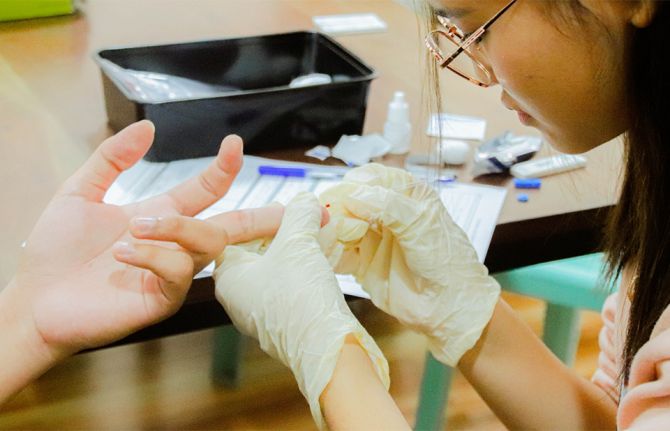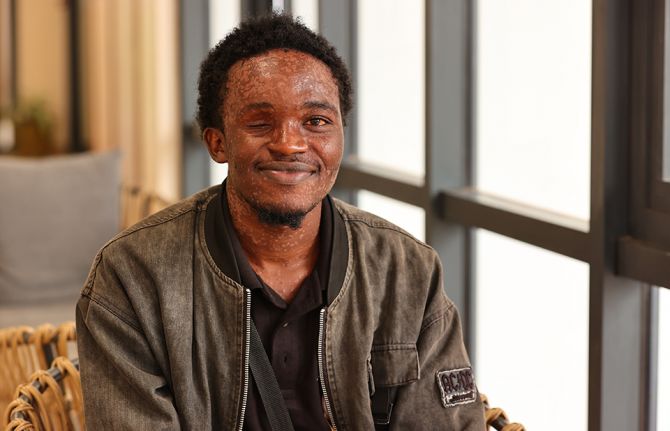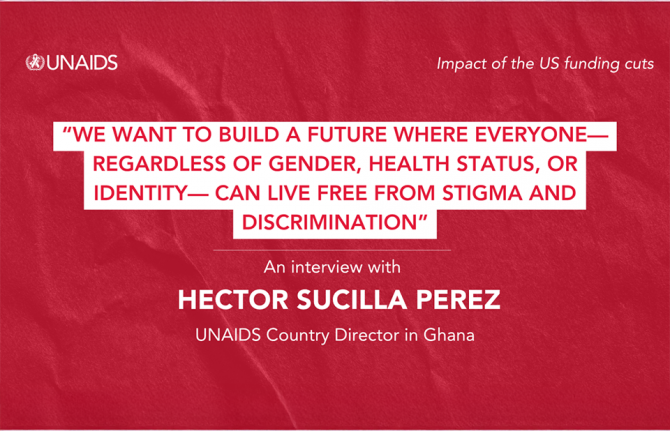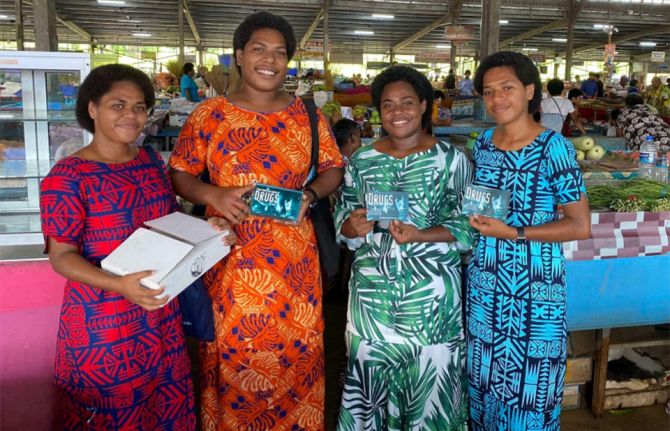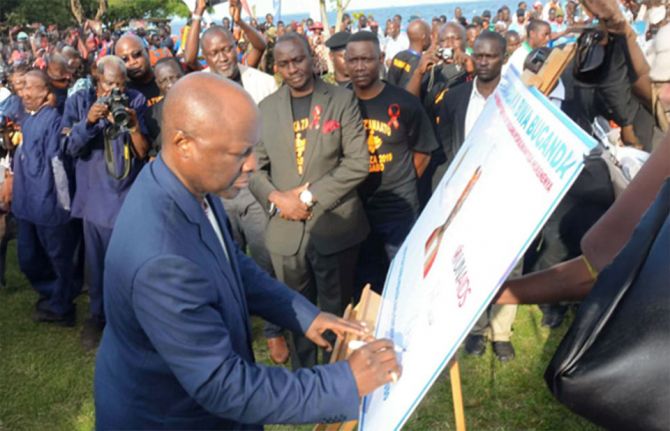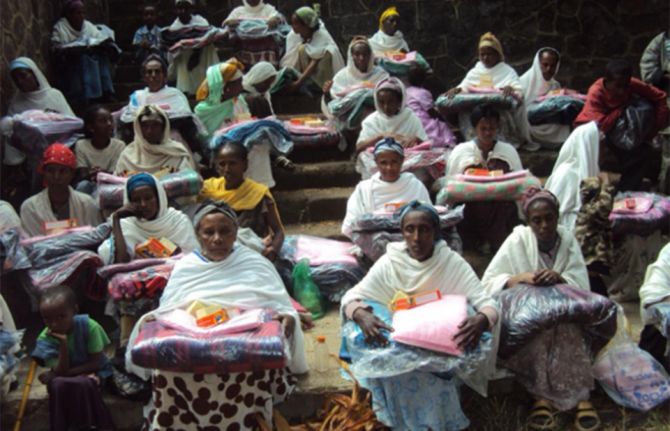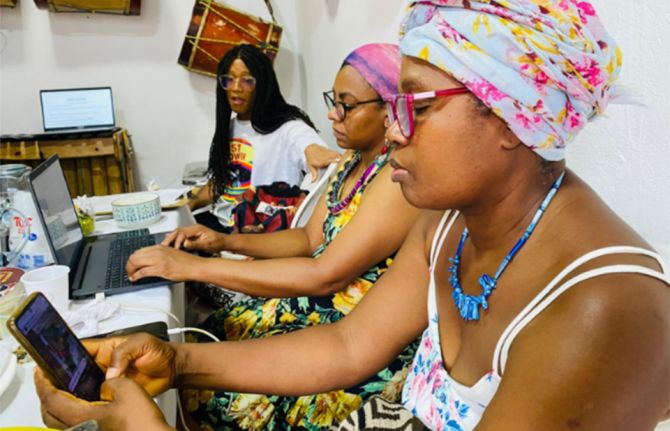
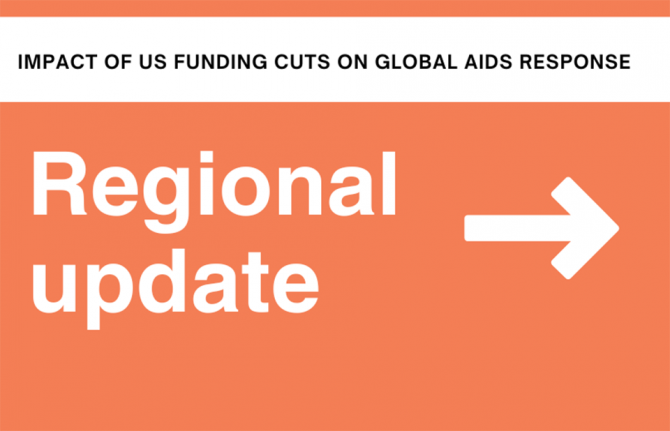
Feature Story
Impact of US funding cuts on HIV programmes in Latin America and the Caribbean
19 March 2025
19 March 2025 19 March 2025Current Situation
Prevention of HIV and other sexually transmitted infections among key populations in Latin America and the Caribbean is heavily reliant on US funding. Recent decisions by the United States Government indicate that efforts to support prevention among key populations will not receive funding resources. This has led to significant disruptions in and challenges for HIV services in the region.
Immediate risks and disruptions
- Humanitarian assistance: Transnational projects aimed at migrant populations have been suspended. Despite a waiver announced on February 1 allowing continued provision of some HIV services, resumption of humanitarian services has been hindered due to the absence of PEPFAR and USAID staff.
- Service delivery: The suspension of US funding has affected the delivery of various HIV services, including those provided by civil society organizations, government entities, and United Nations agencies. NGOs are particularly vulnerable to the US funding cuts.
- Impact on key populations: The US funding cuts have led to stress, depression, anxiety, and uncertainty among people living with HIV and key populations. There is a significant concern about the risk of being left without antiretroviral treatment, access to PrEP, and other essential services.
- Funds allocated for non-contingency humanitarian assistance were primarily focused on the humanitarian crises in Haiti and Venezuela, Colombia's post-conflict challenges, and the Northern Triangle crisis (Guatemala, Honduras, El Salvador). Although these funds were not intended for a direct response to HIV, their absence deepens the structural vulnerability of migrant and other vulnerable populations—including people affected by conflict in Colombia—and puts them at risk of exploitation, human trafficking and survival sex, all of which increase vulnerability to HIV.
Politically relevant updates
- Emergence of extreme positions: In many countries in the region, outbursts of homophobia, transphobia and discrimination against people living with HIV have intensified. Many parliamentarians in the region have taken advantage of the situation to gain political leverage by attacking key populations.
- Media Representation: Actions targeting societal enablers are being shown in the media as examples of waste of money and corruption.
Civil society impact and resilience:
- Survey Findings: A survey conducted by the civil society organization "Corresponsales Clave" (Key Correspondents) with 49 organizations from various countries in the region revealed that US funding cuts have led to significant disruption of services for key populations and emotional distress among people living with HIV and key populations.
- Community Response: Despite the challenges, civil society organizations and community leaders are working to ensure the sustainability of the HIV response by optimizing health services.
- UN Response: The offices of the UN Resident Coordinators are intensifying the search for non-traditional donors and making bilateral approaches with embassies to identify funding opportunities. UNAIDS and PAHO are working together to deliver technical assistance to optimize health services in three areas: integration of HIV services in primary health care, optimization of service delivery models, and facilitation of community response to HIV.
- UNAIDS is carrying out joint analyses with the Global Fund to align the resources of national grants destined to the strengthening and resilience of health e-services with the principles mentioned above.
Additional Insights
- Regional Progress: The Caribbean has made substantial progress against HIV since 2010, with a 22% decrease in new HIV infections and a 57% decrease in AIDS-related deaths. Latin America is the most autonomous region of the Global South in terms of national funding for HIV treatment, but there are still major gaps in prevention and social enablers. Therefore, continued funding is a necessary strategy for a smooth transition towards full sustainability of the HIV response in the region.
- Funding Challenges: The critical impact of the US funding cuts has exacerbated existing challenges in the HIV response across Latin America and the Caribbean.
Related resources
Related

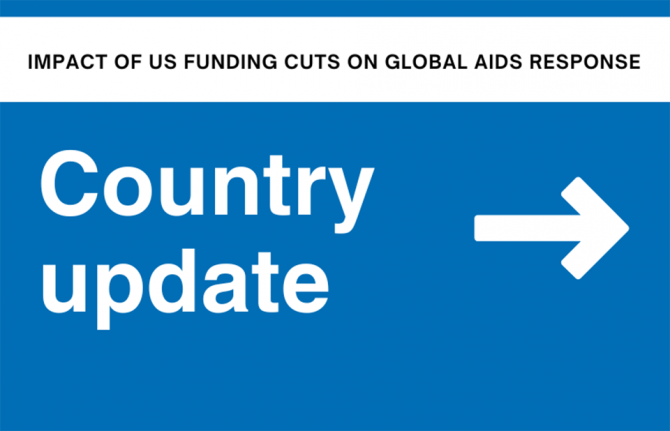
Feature Story
Impact of US funding cuts on HIV programmes in Vietnam
19 March 2025
19 March 2025 19 March 2025Current Coverage and Services
- Pre-exposure Prophylaxis (PrEP): According to the National AIDS authority, as of January 31, 2025, there are 210 health facilities nationwide providing PrEP services, with 44,780 people using the service. Of these, 92 facilities with 31,639 clients (70.7%) are funded by PEPFAR in 11 provinces. Antiretrovirals for PrEP committed by PEPFAR in COP 2024-2025 have been delivered by one third. Current stock can cover for PEPFAR-supported PrEP clients until end of May 2025. Relevant medical facilities supported by US CDC have resumed full package service, while those supported by USAID only provide PrEP medicines from available PEPFAR stock but do not cover associated costs, which fall on patients paying out-of-pocket. The development and implementation of the AIDS Information Management System, including PrEP management system, is on hold.
- Antiretroviral Treatment (ART): ART is mainly financed by social health insurance funds and partially by the Global Fund. Technical assistance to the supply chain and treatment information system, mostly through USAID, has been affected.
- HIV Testing and Treatment: Community outreach and lay testing have been heavily affected. All treatment facilities and service points are operating at full capacity. Prevention of vertical transmission and pediatric services are also functioning without disruption.
- Supplies: ARV supplies, HIV tests, viral load tests, and condoms are available with minimal disruption. According to the Viet Nam Administration of Disease Prevention, PEPFAR committed to support about 40,000 PrEP clients in 2025. The Global Fund is supporting 23,000 PrEP clients in 2025 and 25,000 in 2026.
Immediate Risks and Disruptions
- Funding Freeze: The freeze on PEPFAR funding has significantly impacted the expansion of PrEP coverage. This has led to disruptions in access to PrEP and reduced capacity for HIV prevention services, particularly affecting men who have sex with men, and transgender people.
- Stigma and Discrimination Programs: Almost all PEPFAR supported initiatives addressing stigma and discrimination have been halted and those allowed to continue with support through US CDC are requested to not refer to transgender persons and other key populations, which could exacerbate challenges faced by key populations.
- Civil Society Organizations (CSOs): There has been a reduction or suspension of services provided by CSOs, limiting their ability to participate in essential HIV services, policy discussions, data collection and reporting, and access to government or donor support.
Politically Relevant Updates
- Government Response: The Vietnamese government, through the Viet Nam Administration of Disease Prevention, has formed an informal task team to receive feedback from organizations of people living with HIV and key populations.
- Precise numbers of the affected CBO community workers are not available. The government is not assuming the costs for the community workers affected by the PEPFAR freeze.
- International Support: The US funding cut has led to the suspension and/or termination of USAID-funded projects, including critical healthcare programs for tuberculosis and HIV prevention and strengthening of systems for health/HIV. Despite these challenges, the Vietnamese government remains committed to prioritizing resources and implementing effective measures for HIV prevention and control.
Related resources
Region/country

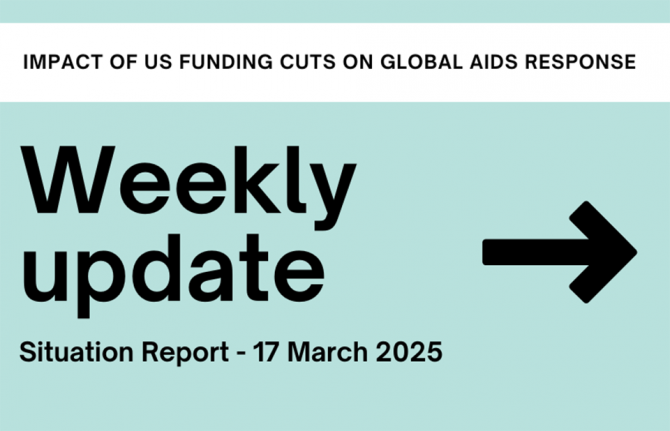
Feature Story
Impact of US funding cuts on the global AIDS response – 17 March 2025 update
19 March 2025
19 March 2025 19 March 2025UNAIDS is releasing weekly updates to track the impact of US cuts to foreign assistance on HIV testing, treatment and prevention. These reports are based on status reports generated by UNAIDS’ Country Offices.
As of 13 March, at least one status report had been received from UNAIDS’ County Offices in 67 countries, including 84% of all PEPFAR-funded countries and an additional 20 countries that receive US support for their AIDS responses.
Low- and middle-income countries across several regions are building on short-term emergency measures to address cuts in US foreign assistance taking action to sustain their national AIDS responses in the medium and long term.
UNAIDS’ Country Offices are supporting these efforts by working with heads of government, Ministries of Health and national AIDS authorities to assess the full impact of the cuts so countries can ensure continuation of critical HIV services in the medium and long term.
Many countries have conducted UNAIDS-supported rapid surveys to assess the impact of the cuts on recipients of HIV services. The results from one survey in a high-burden country in East Africa found that 62% of respondents reported difficulty accessing pre-exposure prophylaxis (PrEP), 46% of people living with HIV experienced disruptions in HIV treatment, and 23% of people living with HIV received smaller amounts of antiretroviral medicines (e.g. a three-month supply instead of the usual six-month supply) from local dispensaries. The survey also found that viral load testing, community outreach, condom distribution and TB diagnostic efforts were also significantly impacted.
Related resources
Related


Feature Story
Impact of US funding cuts on HIV programmes in Uganda
19 March 2025
19 March 2025 19 March 2025Immediate Risks and Disruptions
- Distribution Disruptions:
- According to the policy brief to Parliament prepared by the Uganda AIDS Commission with support from UNAIDS, stocks of ARV supplies, HIV, viral load and other lab test kits are available. However, distribution from district hubs to lower health facilities is disrupted due to reliance on US-funded implementing partners. Facilities have adequate stocks for three months, but the impact will be felt from the second quarter of 2025 if not mitigated.
- Condom stockouts are anticipated within the next 3-6 months due to challenges with last mile distribution.
- Service Capacity:
- All ART-providing facilities are operating at reduced capacity. Some community-led, peer-led, NGO-run, and private facilities have stopped services.
- Reduced adherence to prevention of vertical transmission and early infant diagnosis services due to decreased numbers of expert clients and mentor mothers.
- HIV prevention services for key populations at drop-in centres, including PrEP access, HIV testing, and antiretroviral treatment adherence counselling for sex workers, men who have sex with men, transgender persons, people who use drugs, and prisoners, have been disrupted.
- Human Resources:
- It is unclear whether US-funded health workers will be integrated into the government payroll.
- Data clerks at facilities covered by USAID are not yet back at work, impacting data collection and quality control.
Politically Relevant Updates
- Government Actions:
- The Ugandan President directed the release of UGX 6 billion for the rollout of electronic medical records (EMR) in government health facilities to improve service delivery.
- The Ministry of Health issued guidance on improving service delivery, including integrating HIV, TB, and other chronic disease services, training health workers in integrated service delivery, prioritizing recruitment of critical staff, utilization of primary health care funds for disease prevention outreach activities and strengthening accountability for medicines and laboratory supplies.
- Mitigation Measures:
- The government is reallocating domestic resources to priority HIV programs and integrating HIV services into other health services.
- Civil society partners have conducted rapid assessments to understand the impact of the US Government funding cuts on service delivery.
- Human Rights and Key Populations:
- US funding for stigma, discrimination, and enabling legal environments has stopped, and no alternative funding has been found.
- Communities are not collecting data on human rights issues, including increased stigma and discrimination.
- Key populations groups have conducted a rapid assessment on the impact of the US funding cuts. There is also ongoing work to conduct an assessment with people living with HIV and key populations-related services at drop-in centres.
Related resources
Region/country

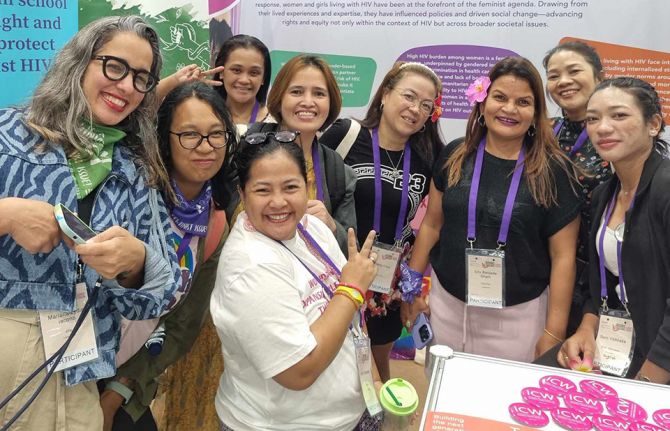
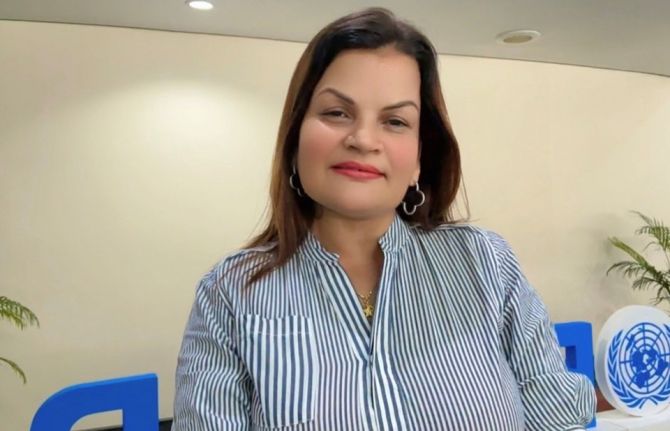
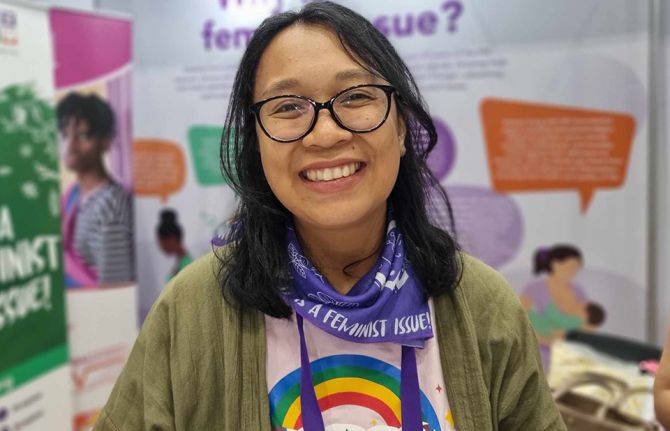
Feature Story
From violence to funding cuts, Asia Pacific women living with HIV face old and new challenges
18 March 2025
18 March 2025 18 March 2025“In our country we are not the priority,” Daisy Cruz says plainly.
She is surrounded by other women living with HIV who agree. They share stories that are not often told about the epidemic in Asia and the Pacific. In a region where men living with the virus outnumber women roughly two to one, the issues of women and girls are often overlooked. They are all members of the International Community of Women Living with HIV Asia Pacific (ICWAP).
Eva Dewa was diagnosed in Yogyakarta, Indonesia in 2017.
“I came home seeking a safe space to share my sadness. At that time, I believed that my partner would support me. Instead, he blamed me,” she says.
Ms Dewa has survived intimate partner abuse. She knows she isn’t alone: “A lot of women either experience violence and get infected with HIV, or contract HIV and experience violence.”
She gave birth to twins two years before her diagnosis. During her pregnancy she was never screened. Unaware, she went on to breastfeed for a couple years. When she learned her status, it was she rather than healthcare staff who suggested the children be tested. One child was HIV negative. The other wasn’t.
UNAIDS estimates that under two-thirds (64%) of women living with HIV in Asia Pacific receive treatment to prevent transmission to their babies. This is far lower than the global average of 84%. Ms Dewa reflects that while HIV services for pregnant women are expanding, smaller cities and rural areas benefit more slowly.
Cathy Ketepa understands the challenge of reaching remote districts. Every day in her native Papua New Guinea, five infants are born with HIV. The epidemic there has doubled since 2010 with new infections among women increasing by a staggering 67%.
“Only around half of mothers living with HIV receive antiretroviral therapy,” says Ms Katepa . “We must bridge this gap to protect the health and future of our children.”
But while the women advocate for expanded services to reduce vertical transmission, they are adamant that their dignity, privacy and agency must be respected. The International Community of Women living with HIV (ICW) has conducted a global analysis of the reproductive coercion, mistreatment and abuse experienced by women living with HIV. The study found that across regions, during pregnancy and infant feeding women were most subjected to force.
“There is an issue with coercive practices,” said Sophie Bryon, ICW’s Director of Global Programmes. “We are talking about women being told not to have children, not to have another child, to terminate and being pressured to undergo sterilization. There is still denial of contraception and pressure to use certain kinds of contraception. There are issues ranging from verbal abuse to physical violence.”
There is also stigma. When Ms Cruz went to the hospital in Manila to give birth in 2001, a nurse on the ward loudly asked why she wasn’t breastfeeding.
“All the patients looked at me like there is something different,” she said.
There is a sense from these women that they’ve been ambushed by a threat they didn’t know existed. But having been hit, they will speak up for themselves, and for others.
Christina Montoya didn’t think it was possible for a woman like her to be infected. She was married and only had sex with her husband.
“We must be informed!” she declared. “And all our friends must be informed!”
11 years of ICWAP
ICWAP builds the capacity of women and girls living with HIV and women-led organizations in 18 Asia Pacific countries. It provides coaching and mentoring, ensuring women participate in Global Fund processes and are meaningfully engaged in community-led monitoring.
The organization was formed in 2014 to tackle the human rights violations and violence women living with HIV in the region experience, while removing barriers to treatment and care. Sita Shahi, its Regional Coordinator explains that the challenges can’t be tackled from a health angle alone.
“Women face a lot of stigma and discrimination. They also have an economic burden and are responsible for rearing children. There are so many intersecting issues,” she explained.
Now there are new challenges. ICWAP conducted an eleven-country survey on the impact of the United States development aid stop work order. It found that some country networks have either collapsed or scaled back, leaving women without crucial resources, including information about their rights and how to address gender-based violence or discrimination. There is also reduced access for many women who depended on community-based services for HIV or sexual and reproductive healthcare. While treatment is provided by government in most countries, many of the shuttered peer-led services were more accessible and friendly.
Some women who worked for US-supported programmes have lost their jobs, resulting in financial stress. ICWAP itself has been hard hit.
“We lost all funding. The core support we were receiving for managing staff and country interventions is gone. It is a devastating situation for us. There is now no funding to support our sisterhood at country level,” Ms Shahi explained.
UNAIDS has called for countries in Asia Pacific to support community-led HIV work including stigma and discrimination, adherence counselling, social support, monitoring and advocacy.
Related


Feature Story
Impact of US funding cuts on HIV programmes in Rwanda
18 March 2025
18 March 2025 18 March 2025General Overview
- Funding: Rwanda's HIV program is predominantly donor-funded. In fiscal year 2023-2024, PEPFAR contributed 37.7% of the total HIV expenditure and the Global Fund contributed 50.8%. There is minimal involvement of domestic private contributors in the HIV response.
- Continuity of Services: The Ministry of Health is the principal recipient of PEPFAR funding. During early days of the Stop Work Order by the US Government, the Government of Rwanda through the Ministry of Health ensured the continuity of essential services and effective implementation of the waivers. Furthermore, the Ministry of Health has committed to mobilizing domestic resources to ensure the continuity of HIV services. All facilities/service points providing antiretroviral therapy (ART) are operating at full capacity. Peadiatric HIV treatment services and data collection activities continue without disruption.
- Supplies and Distribution: Stocks of antiretroviral (ARV) supplies, viral load (VL) test kits, and other lab test kits are available with minimal distribution disruptions. No stockouts are expected in the next 3-6 months. The country has a sufficient stock of condoms for the next 12 months.
Immediate Risks or Disruptions
- Community-Led Services: Some community-led or peer-led facilities and services have been suspended. For example, a local NGO has closed its clinic which provided free and friendly key population services, including sexually transmitted infections testing and treatment.
Though some previously USAID supported DREAMS projects targeting adolescent girls and young women and orphan and vulnerable children (3 out of 5) have received notification to resume work, activities have not fully started due to operational challenges.
- Community-Led Monitoring (CLM): Rwanda received PEPFAR funding for a CLM project to assess the 4As for quality delivery of services including availability, accessibility, acceptability and affordability of services by people living with HIV and key population. That work has now stopped, and communities have suspended data collection on these issues, including stigma and discrimination at service delivery points.
Politically Relevant Updates
- Government and Partners’ Actions: The government, in collaboration with partners, is conducting a rapid assessment of the impact of shifts in US Government funding, with technical support from UNAIDS. Civil society organizations (CSOs) are encouraged to document facility level as well as community supported services delivery gaps and coverage for use in advocacy and resource mobilization.
- Press Conference: During a press conference, the Ministry of Health reaffirmed its commitment to mobilize domestic resources to ensure service continuity.
- Civil Society Organizations (CLOs): CLOs involved in service delivery at community level, particularly prevention and support for ensuring continuity have faced significant challenges, including increased demand with fewer resources, anxiety about continuity and future support, loss of staff, and funding cuts.
- Resilience and Response: Despite these challenges, CLOs continue to play a crucial role in the HIV response. Their resilience and adaptability in the face of funding cuts and service disruptions highlight the importance of community-led initiatives in maintaining essential health services.
UN response
- UNAIDS is supporting the government to assess the overall cost, priority and impact of the stopped interventions to inform actions. UNAIDS is reaching out separately to community networks and NGOs to collect more information about the impact of the US Government cuts.
Related resources
Region/country
Related


Feature Story
Impact of US funding cuts on HIV programmes in Lesotho
17 March 2025
17 March 2025 17 March 2025Current Status
- USAID Projects: Two projects funded by the US Government have received full activation notices; one focused on orphans and vulnerable children (in all 10 districts) and DREAMS (in 4 districts) and another focused-on treatment and care in 2 districts.
- CDC Projects: All CDC projects have received full activation notices.
- Other USAID Implementing Partners: Projects focused on key populations (KPs), voluntary medical male circumcision (VMMC), pre-exposure prophylaxis (PrEP), and a large project on treatment and care and health systems strengthening (HSS) are still terminated.
- Overall: Approximately 28% of PEPFAR support has resumed, 32% is still paused and 40% is terminated.
- Of the 1,508 human resources for health supported through PEPFAR funding, 804 (53.3%) are currently terminated
Immediate Risks and Disruptions
- Frequent Changes in Project Status: The frequent changes in the status of US Government-funded projects have caused delays in the activation process.
- Termination Notices: Some USAID implementing partners have received termination notices, causing disruptions in services.
Government Actions
- Task Team: Led by the Ministry of Health and operational since January 27, the task team is mapping out affected US-funded projects and identifying mitigation measures, including government payment of salaries for essential staff, task shifting, recalling staff on leave, and integration of health workers' roles. The immediate priorities of the Ministry of Health and National AIDS Commission are to ensure commodity security, to lead and coordinate through convening task team meetings and expediting development of Part B of the HIV and TB Sustainability Roadmap
- Funding Decisions: Ministry of Health submitted a contingency budget to the Ministry of Finance and Development Planning to cover salaries at government salary scale for critical staff for three months. For the medium term, government and partners are waiting until the end of the US Government review period (April 20) to make significant funding allocation decisions.
Civil Society Response
- Joint Press Statement: Civil society partners, supported by UNAIDS, issued a statement calling for government support and acceleration of social contracting.
- Impact on Civil Society: Some CSOs are receiving activation notices, while others, like LENEPHWA (network of people living with HIV), remain under termination.
UN Response
- UNAIDS is collaborating with the Government to plan mitigation measures for service continuity, supporting civil society advocacy, and maintaining communication with PEPFAR, USAID, CDC, and USAID prime partners.
- UNAIDS is working with the National AIDS Commission and Ministry of Health to expediate development of HIV and TB Sustainability Roadmap Part B, with preparatory and analytical work while awaiting the global guidance.
- Regular Updates: UNAIDS has kept the Resident Coordinator (RC) and UN Country Team (UNCT) regularly updated, with the RC advocating for the establishment of an inter-ministerial task team to monitor the US Government funding situation.
Region/country
Related


Feature Story
Impact of US funding cuts on HIV programmes in Zimbabwe
17 March 2025
17 March 2025 17 March 2025Current Situation:
- Some USAID and CDC-supported organizations have resumed work, while others are still on pause.
- Public health facilities continue to provide key services despite disruptions, with support from the Global Fund in 21 out of 64 districts.
- Human resources disruptions are affecting HIV treatment services, including medicine distribution, patient management, and monitoring.
- DHIS2 (District Health Information Software 2) is impacted due to the pause in human resources funding.
Immediate Risks and Disruptions:
- Stocks of ARV supplies, HIV, viral load and other lab test kits, as well as condoms are available at facilities/service points, district, regional, and national warehouses with minimum disruption of distribution.
- Condom supply and distribution are impacted, affecting availability, logistics, storage, procurement, packaging, branding, promotion, and demand generation activities.
- HIV prevention services for key populations (sex workers, men who have sex with men, gay men, people who use drugs, transgender persons, prisoners) are disrupted, including access to PrEP, HIV testing, counseling, ART services, opioid agonist therapy, and harm reduction services.
- Stigma and discrimination programmes funded by PEPFAR have stopped, affecting key populations.
Government Actions:
- The government is exploring various sources of funding, including the current airtime tax to sustain healthcare financing.
- Engagements with China and the Gates Foundation are ongoing to expand support for health programmes.
Civil Society Impact:
- Civil society organizations are affected by the US Government shift and are seeking alternative funding.
- Recommendations have been made to engage the government to allocate resources for medicines procurement and stocking with private sector support.
Impact on Key Populations:
- Beneficiaries of key population programmes are facing challenges in accessing PrEP doses due to provider closures.
- Anecdotal reports indicate that some key population representatives are engaging in high-risk sex to raise money for PrEP.
Resilience and Response:
- Despite disruptions, public health facilities and the Global Fund continue to provide essential services.
UN Response:
- Resource mobilization efforts include meetings with the Gates Foundation and the Embassy of Egypt to discuss priority funding areas and south-to-south resource mobilization and learning.
Region/country
Related


Feature Story
Impact of US funding cuts on HIV programmes in Ethiopia
14 March 2025
14 March 2025 14 March 2025The recent US cuts to foreign assistance pose a direct threat to the lives and well-being of thousands of people living with HIV in Ethiopia. Critical services are grinding to a halt, leaving people who rely on them facing an uncertain future. Ethiopia is heavily reliant on external funding for its AIDS response; the US Government provides 53% of HIV funding in the country.
Prior to the US cuts, Ethiopia was on track to reaching the “95-95-95" targets, with 90% of all people living with HIV knowing their status, 94% of those aware of their status accessing treatment and 96 % of those on treatment being virally suppressed. However, there are fears that the funding crisis will reverse the gains made by Ethiopia and that the country will see a resurgence in the annual number of new HIV infections.
Impact on Services:
- ART Services: All facilities and service points providing antiretroviral therapy (ART) are operating at a reduced capacity. However, there are no changes in the capacity for providing prevention of vertical transmission and early infant diagnosis (EID) services.
- Data Collection: Data collection continues at some facilities, but data quality control and collation are affected.
- Supply Chain: Stocks of antiretroviral (ARV) supplies, HIV viral load (VL) and other lab test kits are available, but distribution is disrupted. There is sufficient stock of condoms for the next 12 months, although many aspects of condom supply and distribution have been impacted.
Primary HIV Prevention Services:
- Disruptions: Distribution of condoms and other prevention commodities is disrupted. Availability of pre-exposure prophylaxis (PrEP) services is reduced. HIV prevention education and awareness campaigns are suspended or reduced. Access to HIV testing and counselling services for key populations is decreased. Voluntary medical male circumcision services are limited or suspended. Access to safe and effective HIV prevention services for adolescent girls and young women (AGYW) is disrupted.
Services for Key Populations:
- Sex Workers, PWID, and Prisoners: HIV prevention services for sex workers, people who inject drugs (PWID), and prisoners are impacted. Access to PrEP services is reduced. HIV testing services are discontinued. Availability of HIV counselling and testing is reduced. Access to ART services is disrupted. Opioid agonist therapy and other harm reduction services for PWID are unavailable. HIV prevention services in prisons are decreased.
- Human rights, key and vulnerable populations Ethiopia received PEPFAR funding for work on stigma, discrimination and enabling legal environments. As a result of the USG stop-work order, all programmes on stigma and discrimination have stopped, affecting key populations, AGYW, PLHIV and young people.
- Communities are not collecting data on human rights issues, including increased stigma and discrimination.
Politically Relevant Updates
Government Actions:
- Staff Replacement: The state minister for health sent out a circular to regional health bureaus informing them that government staff would take over from the US-funded staff affected by the US Government stop-work order. This affects more than 5,000 contracts of staff working on HIV.
- International Discussions: Health Ministers of African member states discussed the issue at the WHO Executive Board Meeting.
Civil society impact, resilience and response Community-led or peer-led facilities and services (including drop-in centers), as well as services provided by international NGOs have been affected as a result of the US Government funding cuts. As a result, CLOs have reduced or suspended their services, shifted service priorities, lost staff or faced funding cuts. CLOs have now reduced ability to collect and report data. While CLOs may have some alternative funding sources, they are struggling.
Region/country


Feature Story
Impact of US funding cuts on HIV programmes in Guatemala
14 March 2025
14 March 2025 14 March 2025Immediate Risks and Disruptions
- Funding Cuts: The impact of US Government funding cuts was felt immediately, leading to a shortage of staff in many clinics, which affected patient care.
- Service Delivery: While activities funded through the Global Fund have not been suspended, service delivery has been impacted as clinics absorb clients who can no longer receive care in affected clinics.
- HIV Prevention Programs: There are serious concerns about gaps in HIV prevention programs for key populations, with an increased risk of loss to follow-up, especially in harder-to-reach communities. The National Program and partners have emphasized the critical role of community outreach workers in facilitating and maintaining access to services for key populations.
Politically Relevant Updates
- Government Response: Advocacy efforts led by UNAIDS, in coordination with the Global Fund and local organizations, resulted in the Guatemalan government assuming some financial responsibility for personnel previously funded by USAID. The Ministry of Health has absorbed a considerable proportion of the staff positions left vacant in the UAIs (clinics providing care for people living with HIV).
- Sustainability Strategy: Progress towards developing a sustainable HIV response is underway; there is a draft National Sustainability Strategy 2024-28. However, the transition to a fully sustainable model will require continued leadership and technical support from UNAIDS, especially as the Global Fund phases out.
Communication Story Highlighting Impact
- Community Resilience: Despite the US funding cuts, some community service delivery models have continued providing services. For example, a community-run clinic has absorbed a significant number of patients for PrEP services. With support from UNAIDS, they diversified their funding sources and adopted a voluntary financial contribution model, enhancing sustainability.
- Advocacy and Support: UNAIDS in collaboration with the Global Fund is spearheading efforts to strengthen civil society organizations' capacity to advocate for domestic resources. They are also laying the groundwork for social contracting for HIV in Guatemala.

